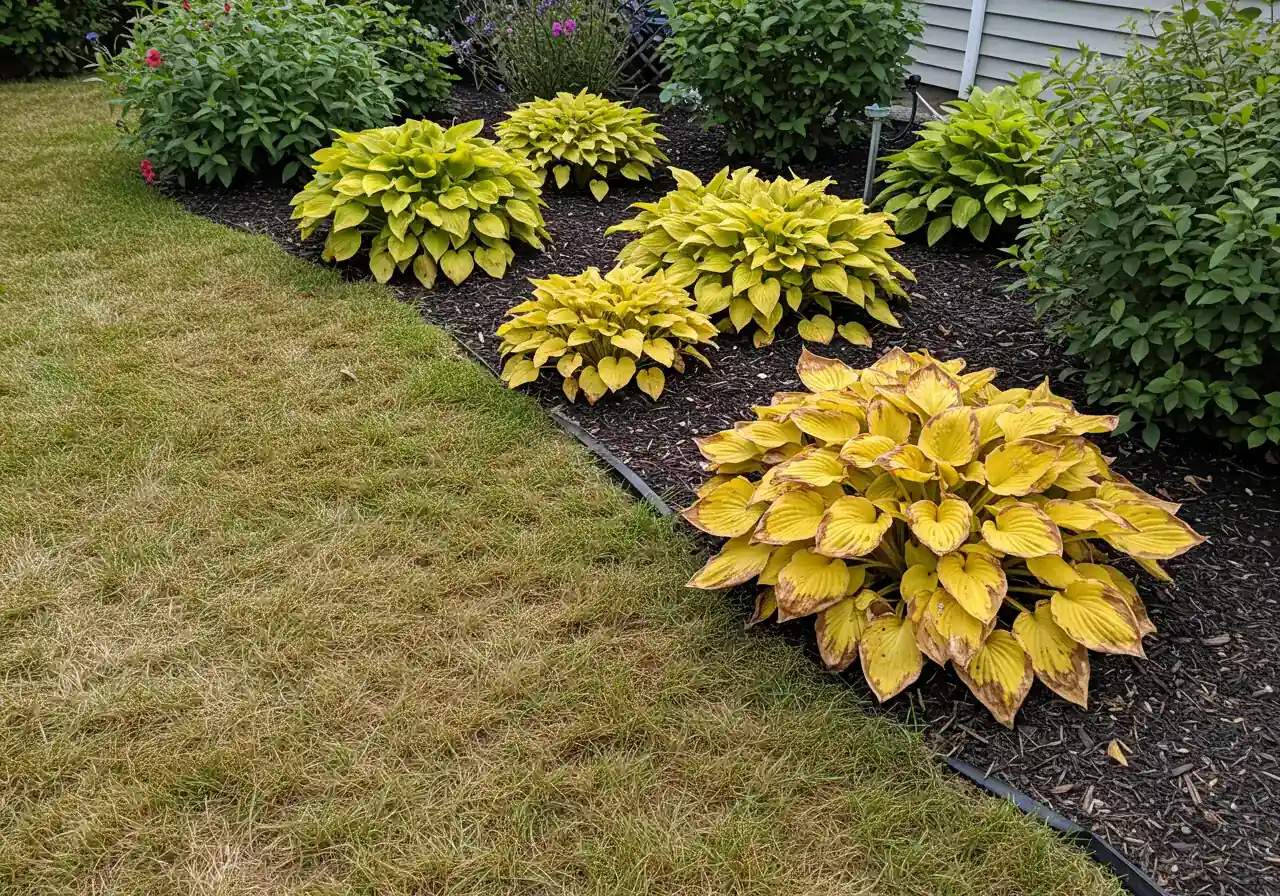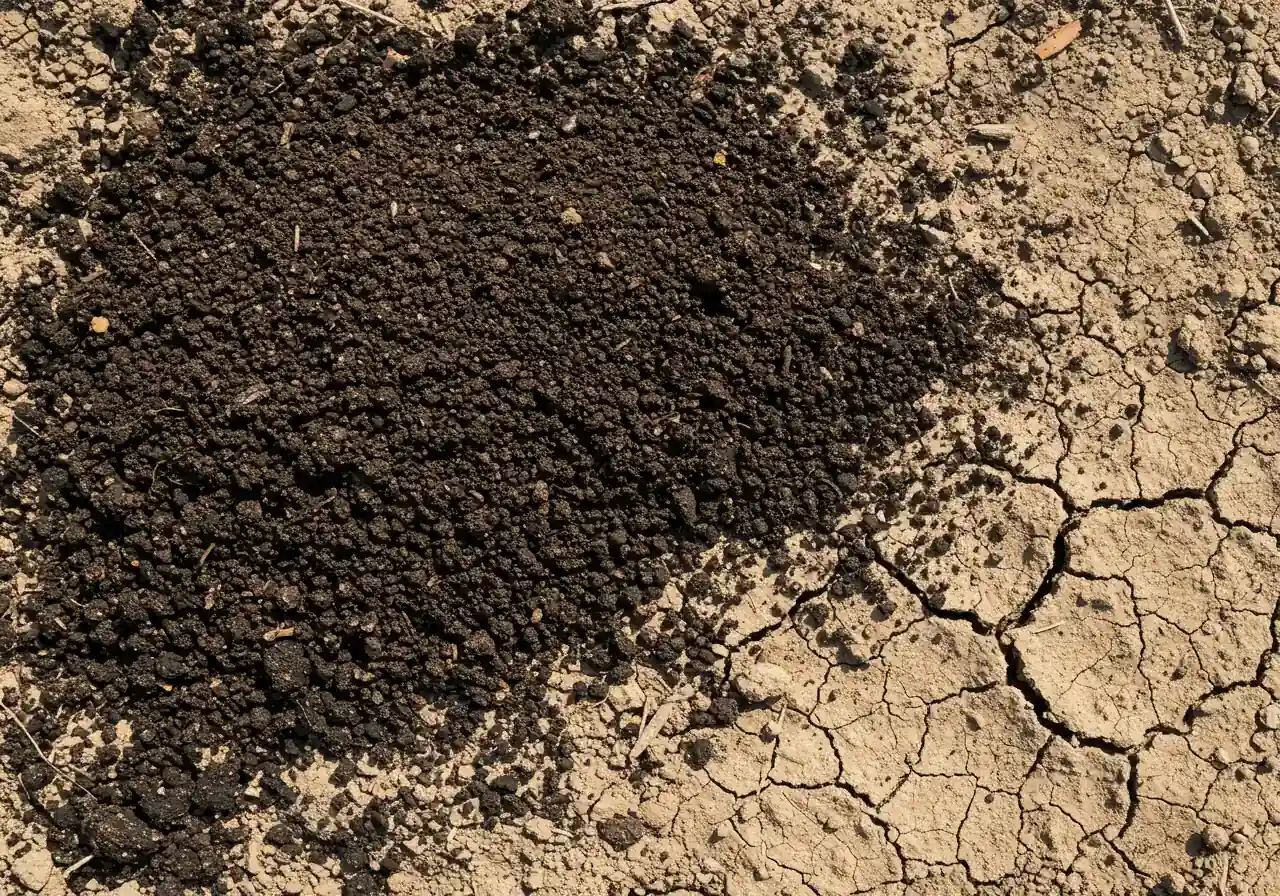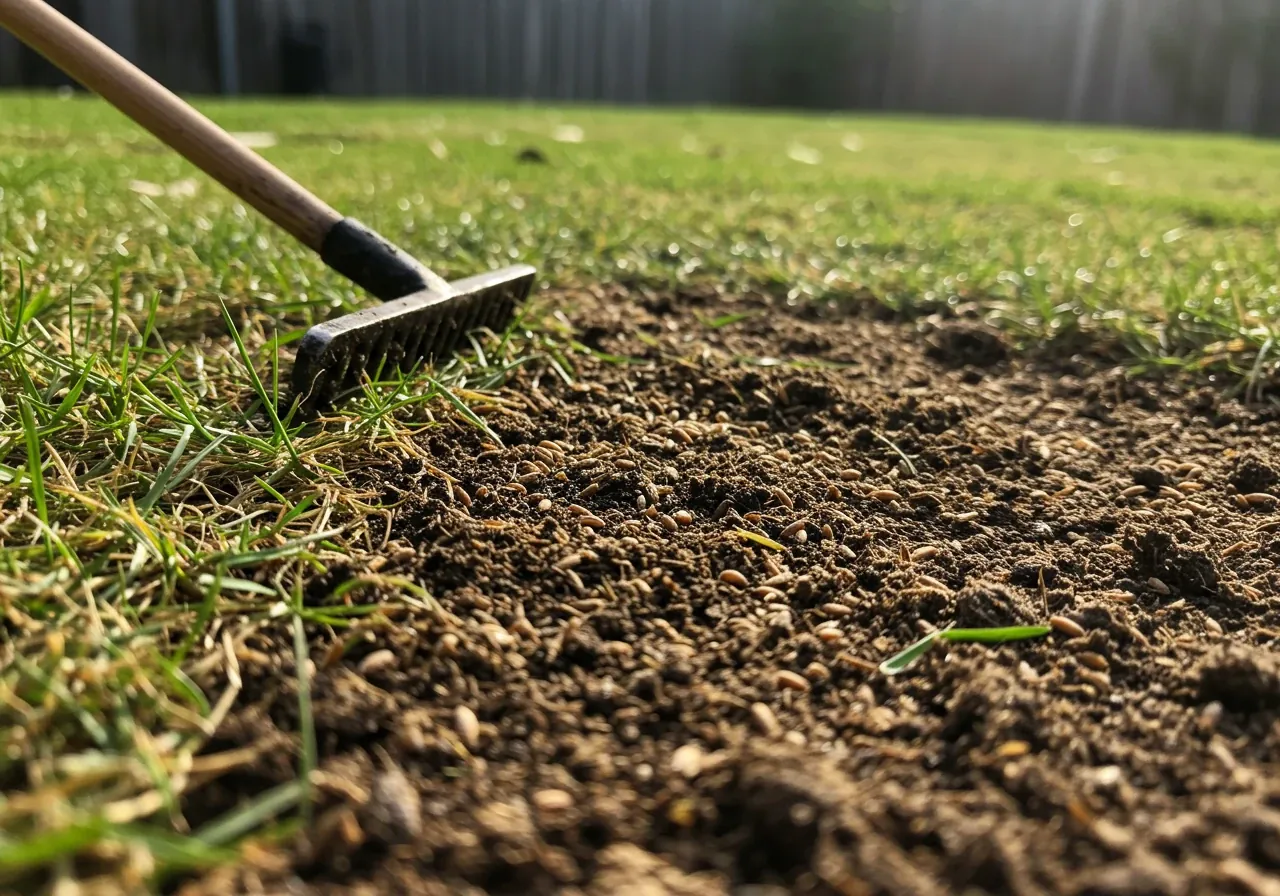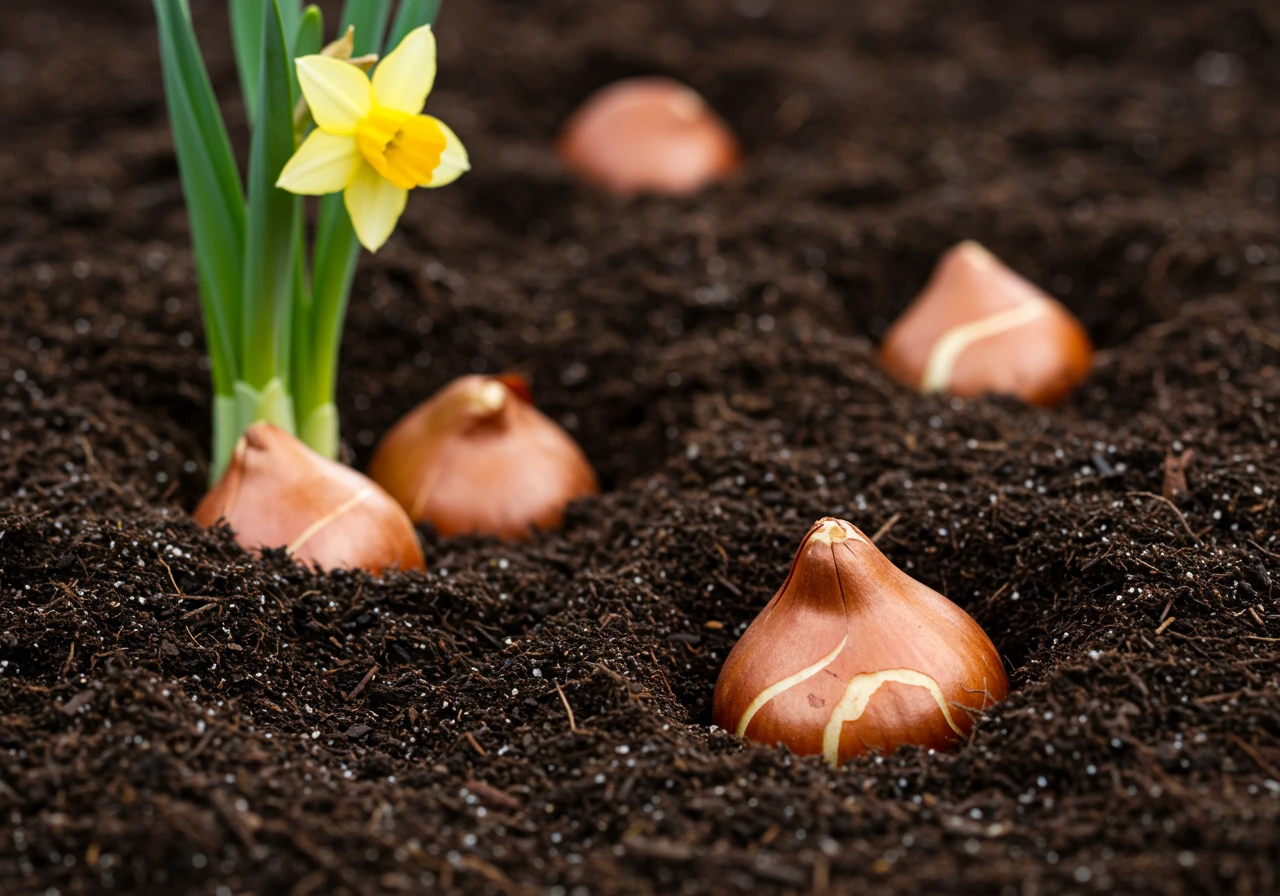Expert Embrun Garden Recovery: Fix Summer Damage Fast
Quick Summary: Revive Your Post-Summer Garden
- Assess Damage: Check lawns, plants, and soil for signs of stress.
- Boost Soil: Aerate and add compost or organic matter. Mulch for protection.
- Tidy & Plant: Prune dead growth, overseed lawns, divide perennials, plant fall bulbs.
- Water Smartly: Water deeply but less often as temps cool.
- Manage Pests Eco-Friendly: Monitor and use gentle methods first.
Is your garden looking worse for wear after the summer heat? Don’t wait! Contact us for a free quote to get professional help restoring your Embrun garden.
Introduction: Phew! Summer Was Hot, Eh? Let’s Revive Your Embrun Garden!
Well, that summer certainly didn’t hold back, did it? If your Embrun garden is looking a bit frazzled after weeks of blazing sun and maybe even some benign neglect while you enjoyed a well-deserved vacation, you’re definitely not alone. Across the Ottawa area, from Russell to right here, many yards are showing signs of heat stress – think crispy lawn patches, droopy perennials, and perhaps a few more weeds than you remember planting!
Gardening in our specific climate zone (hello, zone 5a/b! – Check your zone precisely using resources like Agriculture and Agri-Food Canada’s map) brings unique challenges, and recovering from a hot, dry summer is high on that list. But don’t hang up your trowel just yet! Your garden isn’t a lost cause; it just needs a little TLC to bounce back beautifully for fall. We specialize in understanding local landscaping needs and know exactly how to tackle post-summer gardening woes. This section is packed with practical tips to help you rejuvenate your soil, pamper your plants, and get your outdoor space looking gorgeous again. Let’s dive in and give your garden the refresh it deserves!
Step 1: Playing Detective – Assessing the Summer Aftermath in Your Garden
Step 1: Playing Detective – Assessing the Summer Aftermath in Your Garden

Alright, grab your magnifying glass (or just your regular glasses) – it’s time to channel your inner Sherlock Holmes and investigate what summer really did to your Embrun garden. Before we jump into fixing things, we need a clear picture of the situation. Think of this as gathering clues at the scene. Don’t worry, it’s less “elementary, my dear Watson” and more about taking a good, honest look around your yard. This initial assessment is crucial for effective gardening going forward.
Your Garden Investigation Checklist:
Let’s walk through your landscaping methodically:
- The Lawn Lowdown: Get down low. Are there brown, crunchy patches? Or maybe thin areas where weeds are staging a takeover? Note the size and location of stressed spots. Is it full sun areas, or sloped sections where water runs off? These are classic signs of heat stress or potential grub activity.
- Perennial Patrol: Check your trusty perennials (the plants that come back year after year). Look for yellowing or brown leaves, crispy edges, wilting even after watering, or fewer flowers than usual. Some might just look tired, while others might be truly stressed from the summer conditions.
- Annual Autopsy (Okay, maybe just check-up!): Your annuals (the one-season wonders) often take the hardest hit from heat and inconsistent watering. Are they leggy, pale, or have they stopped blooming? Some might be past saving, and that’s okay – their job was to shine brightly for the summer! Note which ones fared better or worse for future planting choices.
- Shrub Scrutiny: Examine leaves for scorch marks (brown edges), unusual spots, or signs of pests like fine webbing (spider mites love dry conditions!) or chewed holes. Check the base for any damage or signs of diseases. For specific pest identification help, resources like the Master Gardeners of Ottawa-Carleton can be invaluable.
- Soil Survey: How does the soil feel? Poke a finger in (go on, get a little dirty!). Is it rock hard and cracked? That’s common with our heavy clay soil after a dry spell, which can make it tough for water to penetrate. Or is it surprisingly loose and dry, like some loamier patches found around Manotick might be? Understanding your , is key to planning recovery.
Decoding the Clues:
What you’re likely seeing are classic signs of heat stress and drought damage. Plants often sacrifice outer leaves to conserve water for their core. Pests and diseases, like powdery mildew on phlox or leaf spot on roses, often prey on weakened plants. You might notice different levels of stress across your yard – perhaps the plants near your Greely home’s foundation baked more than those in dappled shade. Knowing what went wrong helps you plan your next steps, whether it’s adjusting watering, amending the soil, or preparing for essential expert fall cleanup tasks to revive your garden. This assessment also helps identify which plants might need extra or if you simply need comprehensive professional yard cleanup services to tackle a bigger job, like the kind we offer with our dedicated Kars yard cleanup service. Remember, good garden maintenance practices, like those you might implement after reading some expert spring care tips for Osgoode gardens, can help build resilience for next summer’s challenges here in the Ottawa region.
Step 2: Soil SOS! Giving Your Garden Foundation Some TLC
Okay, you’ve played detective and sized up the summer damage. Now, let’s get our hands dirty (literally!) and focus on the unsung hero of your garden: the soil. Think of it as the foundation of your house – if it’s crumbly and weak, everything built on top will struggle. Giving your soil some TLC now is probably the single most important thing you can do to help your plants bounce back and thrive next season.

Why the Fuss About Dirt?
After a hot, dry summer, soil often gets compacted, especially the heavy clay soil common across Ottawa, from Barrhaven to Nepean. Compacted soil is like trying to drink through a clogged straw – water and air can’t get down to the roots where they’re needed most. Plus, summer heat can bake out organic matter, leaving the soil nutrient-poor and lifeless. Your poor perennials and shrubs might be sitting in brick-hard ground, gasping for air and a decent meal! Reviving the soil structure and replenishing nutrients is key to gardening success.
Step-by-Step Soil Revival:
- Loosen Up! (Aeration): Before adding goodies, help your soil breathe. For garden beds, you can simply use a sturdy garden fork. Plunge it deep into the soil every 15 cm (6 inches) or so and gently rock it back and forth to create channels for air and water. Avoid excessive tilling, which can damage soil structure. For lawns suffering compaction, core aeration (pulling out small plugs of soil) is fantastic, though often best left to lawn care pros unless you fancy renting a hefty machine.
- Feed the Foundation (Amendments): This is where the magic happens. Adding organic matter is like giving your soil a superfood smoothie. It improves drainage in clay, helps sandy soil hold moisture, provides nutrients, and feeds beneficial soil microbes. What should you add?
- Compost: The gold standard! Made from decomposed yard waste and kitchen scraps (no meat/dairy).
- Pros: Excellent all-around soil conditioner, improves structure, adds slow-release nutrients. Eco-friendly, especially if homemade or sourced locally.
- Cons: Nutrient levels vary.
- Best For: Pretty much everything! Top-dressing beds, mixing into planting holes.
- Well-Rotted Manure: Think aged cow, sheep, or poultry manure (never fresh – it burns!).
- Pros: Often higher in nitrogen and other key nutrients than compost.
- Cons: Must be well-aged (at least 6 months to a year). Can sometimes contain weed seeds. Source carefully.
- Best For: Revitalizing depleted beds, hungry vegetable gardens (use moderately).
- Leaf Mold: Simply decomposed leaves – nature’s perfect conditioner.
- Pros: Amazing for improving soil structure and water retention. Free if you use your own fall leaves! Great for beneficial fungi.
- Cons: Lower in nutrients than compost/manure; takes time to break down.
- Best For: Improving moisture retention, top-dressing woodland plants or under shrubs.
- Compost: The gold standard! Made from decomposed yard waste and kitchen scraps (no meat/dairy).
- Tuck It In (Fall Mulching): Once you’ve amended, apply a layer of organic mulch (shredded bark, wood chips, or even shredded leaves) about 5-7 cm (2-3 inches) deep. Keep it away from plant stems. Fall mulch protects your newly improved soil from winter rains and erosion, suppresses fall/spring weeds, insulates roots from freeze-thaw cycles, and continues to break down, adding more organic matter. Imagine the transformation – healthy soil leads to vibrant gardens like those in our project gallery showing rejuvenated landscapes.
Taking these steps might seem like effort now, but your garden will thank you profusely next spring. Healthy soil is the cornerstone of resilient landscaping. Whether you’re dealing with compacted clay near Nepean or different conditions requiring our dedicated Metcalfe yard cleanup service, improving soil is key. As a team passionate about Ottawa gardens, find out more about our local landscaping expertise. Feeling overwhelmed by the soil situation or need help sourcing and spreading amendments? Book a free estimate with us to discuss professional soil care options.
Step 3: Prune, Plant, Patch: Giving Your Plants a Fresh Start
Okay, team! With the soil feeling refreshed after Step 2, it’s time to turn our attention back to the plants themselves. Think of this as the spa day after the deep cleanse – we’re going to trim, tidy, and maybe even multiply! Giving your plants a little hands-on care now sets them up beautifully for fall and a strong return next spring.


Pruning: A Necessary Haircut
Some of your plants might be sporting brown tips, dead stems, or just looking generally ragged after summer’s trials. Don’t be shy – grab those clean pruners!
- Why Prune Now? Removing dead or damaged bits cleans things up visually, sure, but it’s also healthier for the plant. Dead stems can invite pests and diseases. Pruning encourages new growth where you want it (often lower down for bushier perennials) and directs the plant’s energy away from trying to support failing parts.
- How To: It’s usually pretty simple. For perennials like hostas or daylilies with browned leaves, cut the affected leaves right back to the base. For shrubs with dead twigs or branches, follow the dead part back until you find healthy, green wood and cut just above a bud or outward-facing branch. Don’t go crazy hacking everything back yet, though – major reshaping is often best left for spring, depending on the plant. If you’re facing a jungle of overgrown shrubs or tangled vines, tackling the job might feel overwhelming. That’s where a comprehensive Ottawa garden clean-up service can really save the day, handling the bigger pruning tasks efficiently.
Patching the Lawn: Banishing Brown Spots
Those crispy brown lawn patches we spotted in Step 1? Late summer/early fall is the perfect time for overseeding in the Ottawa area. The soil is warm, there’s usually more moisture, and weed competition is lower.
- Step-by-Step Overseeding:
- Rake it Out: Vigorously rake the dead patch to remove the brown grass and loosen the soil surface slightly.
- Top It Up (Optional but good): Sprinkle a very thin layer (maybe 1 cm or 1/4 inch) of good quality topsoil or compost over the area.
- Seed Simply: Scatter grass seed appropriate for our climate over the prepared patch. Ensure good seed-to-soil contact – gently pressing it down helps.
- Water Wisely: Keep the seeded area consistently moist (not soaked) until the new grass sprouts and gets established. This might mean light watering once or twice a day for a couple of weeks.
Divide and Conquer: Multiplying Your Perennials
Feeling generous? Fall is a great time to divide many perennials that might have gotten too big or aren’t flowering as well in the centre. Plus, free plants!
- Who to Divide Now? In our Zone 5a/b climate, fall division (ideally 4-6 weeks before the ground freezes, so think late August to late September) works well for spring and early summer bloomers like Hostas, Daylilies, Siberian Iris, Peonies (handle gently!), and Astilbe. Avoid dividing fall bloomers like Sedum ‘Autumn Joy’ until spring. For local advice, check resources like the Ottawa Horticultural Society.
- How To: Gently dig around the entire plant clump and lift it out. Shake off excess soil. Depending on the root structure, you might be able to tease divisions apart by hand, use two garden forks back-to-back to pry them apart, or make clean cuts with a spade or sharp knife for dense roots. Ensure each new division has a good chunk of roots and several growth points (eyes/buds). Replant promptly at the same depth, water well, and mulch. If dividing plants is part of a larger yard refresh, learning about our local team can tell you more about our expertise in full-service landscaping and plant care.
Planting for Next Season (and This Fall!)
Don’t put that trowel away just yet! Fall is prime planting time.
- Spring Bulb Spectular: Plant tulips, daffodils, hyacinths, crocus, and alliums now for a burst of colour next spring. Follow planting depth guidelines (usually 2-3 times the bulb’s height).
- Garlic Gold: Plant garlic cloves (pointy end up!) in mid-October for a delicious harvest next summer.
- Fall Colour Pop: Add some instant cheer with hardy fall annuals like mums, ornamental kale, or pansies.
Late Summer Focus (Aug/Early Sep)
Assess damage, prune dead/damaged growth, overseed lawn patches, divide early bloomers (hostas, daylilies), keep watering deeply if dry. Check for pests heightened by heat.
Mid-Fall Focus (Late Sep/Oct)
Plant spring bulbs and garlic, add fall annuals, continue dividing perennials if needed (early Oct latest), start light leaf cleanup, consider applying fall fertilizer to lawn if needed. For big leaf jobs or overall tidying beyond just the garden beds, explore options for broader property clean-up. If you’re closer to Marionville, tailored assistance is available through our Marionville garden clean-up service.
Late Fall Focus (Nov)
Finish leaf cleanup (mulch mow some onto lawn/beds!), protect sensitive plants if needed, final watering before ground freeze, clean and store tools. Rest easy knowing you’ve set your garden up for success. And remember, any information shared when contacting us is handled carefully; you can always review our privacy policy.
Garden Recovery Timeline Overview
Late Summer
Assess heat damage. Prune dead foliage. Overseed lawn spots. Water deeply.
Early Fall
Amend soil with compost. Divide early-blooming perennials. Start planting bulbs.
Mid-Fall
Plant garlic & remaining bulbs. Add fall annuals. Continue cleanup. Mulch beds.
Late Fall
Final leaf cleanup. Protect sensitive plants. Winterize tools. Final watering.
Step 4: Water Wisely & Battle Bad Bugs (The Eco-Friendly Way!)
Okay, garden warriors, let’s talk H2O and those uninvited garden guests! After a hot summer, it’s tempting to keep drowning your plants, but fall gardening calls for a smarter strategy. Plus, weakened plants can be a magnet for pests and diseases, so let’s tackle those the green way.
Becoming a Water-Wise Warrior
As the days get cooler and shorter here in the Ottawa valley, plants start winding down for their winter nap. They simply don’t need as much water as they did during summer’s peak performance. Your new watering mantra? Deeply, but less frequently.
- Why the Shift? Constant shallow watering encourages shallow roots, which are vulnerable to winter cold and drought. Deep watering encourages roots to grow further down into the soil, making plants tougher and more resilient. Plus, cooler temperatures mean less evaporation. Check the City of Ottawa’s resources for seasonal watering advice.
- How To: Instead of a quick daily sprinkle, give your garden beds and lawn a good, long soak perhaps once a week, or even less if we get decent rain. How do you know when? Do the finger test! Poke your finger about 5 cm (2 inches) into the soil. If it feels dry at that depth, it’s time to water. If it’s damp, hold off. This allows the soil surface to dry out slightly, which can also discourage some diseases. Proper watering is a cornerstone of good ongoing garden maintenance.
Battling Bad Bugs (Without the Nasties!)
Summer stress can leave plants vulnerable. You might notice more issues like powdery mildew (that white dusty coating on leaves, especially on phlox or lilacs around Russell) or discover lawn damage from grubs (those charming C-shaped larvae that munch grass roots, sometimes a real headache in areas like Osgoode). Instead of reaching straight for harsh chemicals, let’s explore Integrated Pest Management (IPM). IPM is just a fancy way of saying: use the least harmful solutions first!
- Prevention is Key: Healthy plants are naturally more resistant. Remember all that work we did on soil preparation? That’s your first line of defence! Proper spacing for air circulation also helps prevent fungal diseases like mildew.
- Monitor Regularly: Keep an eye out for trouble. Catching problems early makes them easier to manage. A great local resource for identifying issues is our team’s experience – see our Google profile for contact info and reviews.
- Eco-Friendly Controls:
- Hand-Picking: Got big caterpillars or slugs? Pluck ’em off! (Maybe wear gloves?). Drop them in soapy water. Simple, effective for small infestations.
- Water Spray: A strong jet of water can knock aphids and spider mites off plants.
- Insecticidal Soap/Horticultural Oil: These are less toxic options that work by smothering soft-bodied insects. Follow directions carefully.
- Beneficial Nematodes: For grubs in the lawn, applying beneficial nematodes (microscopic worms that prey on grubs) in late summer/early fall can be very effective.
- Pruning: Remove diseased leaves or branches promptly to stop the spread. Dispose of infected material – don’t compost it.
Dealing with widespread pests or diseases can sometimes feel like a losing battle. If you’ve got a major infestation or large areas affected, sometimes a thorough cleanup is the best reset. This might involve removing heavily diseased plants as part of a broader Ottawa yard cleanup service. If you’re near Marionville and facing similar issues, specialized help is available through our Marionville yard cleanup service. Unsure how to tackle a specific pest in your Vernon garden? Don’t hesitate to ask for advice; we respect your data, as outlined in our company privacy policy. By watering wisely and choosing eco-friendly pest solutions, you’re creating a healthier, more resilient garden environment.
Quick Wins: Your Embrun Garden Recovery Cheat Sheet
Feeling like your garden went from ‘gorgeous’ to ‘good grief’ this summer? No worries! Here are a few super quick things you can do right now to start the recovery process for your Embrun or Ottawa area landscaping. Think instant gratification, garden-style!
- Weed Ruthlessly (Selectively): Forget tackling everything. Grab the five biggest, most obvious weeds you see from your window or pathway. Yank ’em out! Instant improvement, minimal sweat. Seriously, it works wonders for morale.
- Edge Definition: Grab a spade or edger and clean up just one prominent garden bed edge or a section along your walkway. Crisp lines scream “tidy” even if the rest is still recovering. For that super sharp, long-lasting look, professional mulching and edging services make a world of difference.
- Container Cheer-Up: Got sad-looking pots? Pull out anything truly dead, fluff up the remaining soil, and maybe pop in one or two cheap and cheerful fall mums or pansies. Instant colour!
- Spot-Fix the Lawn: Got one glaring brown patch ruining the view? Rake out the dead stuff, sprinkle some grass seed and a little topsoil, and keep it damp. If it’s a bigger issue and you want results yesterday, considering professional sod installation can provide that immediate green carpet look.
- Plan Your Dream (Quickly): Take 5 minutes while sipping your coffee. What’s one thing you’d love to change or add next year? Maybe it’s envisioning a beautiful new garden installation. Making a small plan feels productive! Just remember, for any big future projects with service providers, it’s wise to quickly review their terms and conditions. These small steps lead to big results you’ll be genuinely thankful for achieving! Accessing client resources is easy via our customer portal.
Embrun & Ottawa Garden Recovery FAQs: Your Questions Answered!
Not at all! Late summer through mid-fall (think August to October) is actually prime time for many gardening recovery tasks like soil amending, overseeding lawns, planting bulbs, and dividing perennials. The cooler temps and decent moisture are great for establishing plants before winter. Just aim to get roots settled about 4-6 weeks before the ground typically freezes solid (usually late November/early December).
Compost is fantastic for improving clay soil structure and adding nutrients, but sometimes concrete-like soil needs a bit more help. Gently aerating with a garden fork *before* adding compost helps break up compaction. Consider incorporating other amendments too, depending on your goals. Getting the right mix is key, and understanding your options is important – check out our guide on choosing the best landscaping materials. For large areas, professional soil amending can save your back!
Good news – you often don’t need harsh chemicals! For spider mites, a strong spray of water can work wonders. For powdery mildew, prune affected leaves (don’t compost them!) to improve air circulation. Maintaining healthy soil and avoiding plant stress is the best prevention. Sometimes a thorough cleanup helps remove overwintering pests; this might be part of a larger job like our specialized Marionville property cleanup service.
Yes, absolutely! October is often ideal for planting spring-blooming bulbs (tulips, daffodils, garlic). Many hardy perennials can also be planted, giving them time to establish roots before the deep freeze. Planting now means less work in spring and beautiful results sooner – you can see some examples of how planting impacts curb appeal in our gallery of garden transformations. Just water them in well!
Don’t panic! For tender annuals or veggies, covering them overnight with an old sheet or frost cloth (remove it in the morning!) can buy you extra time. For stressed perennials or new plantings, ensuring they’re well-watered before a frost helps (moist soil holds heat better than dry soil), and a layer of mulch provides root insulation. Most established, hardy plants in our zone handle light frosts just fine.
If the thought of tackling the weeds, pruning, soil work, and cleanup feels like too much, or you simply lack the time or equipment, calling for professional help is a smart move! It saves you stress and ensures the job is done right. Whether it’s a massive leaf invasion, extensive soil amending, or just getting the whole property tidy, services like our Metcalfe garden clean up service or the comprehensive Ottawa property cleanup service (or even Metcalfe property cleanup service) can quickly get your landscaping back on track.
Conclusion: From Summer Stressed to Autumn Awesome – Let’s Get Your Garden Glowing!
Phew! We’ve journeyed together from assessing summer’s toll on your precious plants to rolling up our sleeves for some serious garden therapy. By playing detective, giving your soil that vital TLC, tending to your greenery with smart pruning and planting, and adopting water-wise habits while managing pests kindly, you’re doing more than just cleaning up. You’re actively investing in your garden’s future health and beauty!
Think of this fall recovery effort as laying the groundwork for a less stressful, more vibrant spring. Healthier soil and rested perennials mean a stronger start next year, better equipped to handle whatever our Ottawa weather throws its way, whether you’re in Osgoode, Winchester, or right here in Embrun. It’s about transforming that tired patch into a thriving piece of landscaping you can be proud of.
Feeling inspired but maybe need a helping hand to tackle the bigger tasks? Let our local gardening expertise work for you! Request your free, no-obligation quote today and let’s discuss how we can get your specific yard glowing this fall. Let us handle the hard work so you can enjoy an Autumn Awesome garden!

